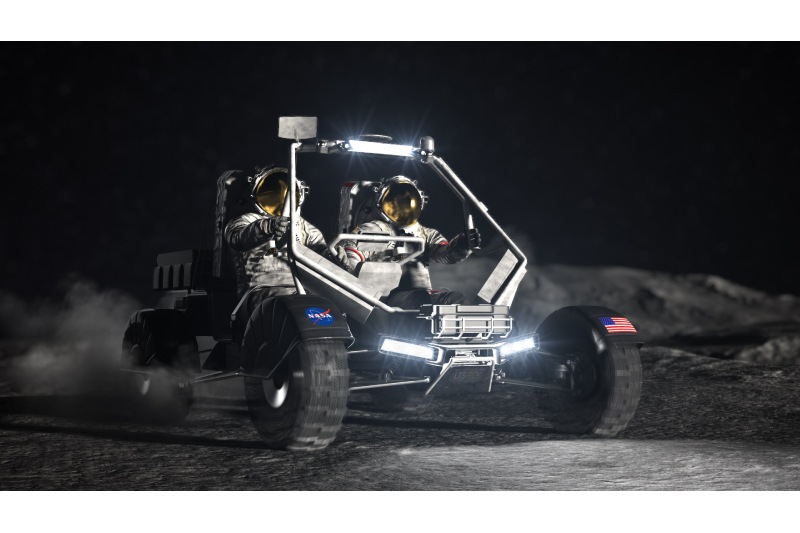NASA Selects Three Companies to Work on Creating a Moon Vehicle for the Artemis Crew

For the Artemis lunar exploration program, NASA has chosen Venturi Astrolab, Lunar Outpost, and Intuitive Machines to construct the lunar terrain rover. Task orders with a potential value of $4.6 billion over the next 13 years are up for grabs for all three companies.
The three will refine their team’s concepts for a Lunar Terrain Vehicle (LTV) that will facilitate astronaut exploration of the southern polar area of the Moon. It makes sense for NASA to establish a base camp there as it’s thought that the region holds frozen water.
Each of the three has to create a vehicle that can withstand the harsh environment of the region and fit two astronauts in suits. They must also have the ability to operate remotely and robotically so that NASA can carry out experiments and testing even when there are no personnel on the Moon.
They have to do “a feasibility task order, which will be a year-long special study to develop a system that meets NASA’s requirements through the preliminary design maturity project phase” as their next course of action. Before the Artemis V mission, NASA will then ask for a proposal for a demonstration mission to carry out further development, launch their LTV to the Moon’s surface, and verify performance and safety.
“We will use the LTV to travel to locations we might not otherwise be able to reach on foot, increasing our ability to explore and make new scientific discoveries,” said Jacob Bleacher, chief exploration scientist in the Exploration Systems Development Mission Directorate at NASA Headquarters in Washington. “With the Artemis crewed missions, and during remote operations when there is not a crew on the surface, we are enabling science and discovery on the Moon year-round.”
After being the first commercial aerospace business to land a spacecraft on the Moon, Intuitive Machines grabbed headlines recently. It was also the first American lunar lander to set foot on the moon in more than half a century, albeit from the opposite side.
Prior to achieving its overarching objective of one day getting ready for human expeditions to Mars, NASA’s Artemis program seeks to establish a sustainable presence close to the Moon. Following NASA’s challenge to land humans on the moon by 2024 from former vice president Mike Pence, the campaign was started. Since then, the landing mission, Artemis III, has been scheduled for September 2026, while the Artemis II mission has been rescheduled for September 2025.